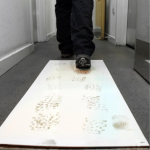Application
Research CategoryInfectious DiseasesInflammation & ImmunologyStem Cell Research
Components
1) ≥1X106 viable LX-2 Human Hepatic Stellate Cells: (Catalog No. SCC064). Store in liquid nitrogen.
General description
Hepatic stellate cells are a major cell type responsible for liver fibrosis following their activation into fibrogenic myofibroblast-like cells in diseases such as chronic alcoholism, hepatitis B and C, fatty liver disease, obesity and diabetes. There is an increasing need for renewable cell culture models that faithfully recapitulate their in vivo phenotype, particularly for human studies.
LX-2 was generated by immmortalization of primary human hepatic stellate cells with the SV40 large T antigen followed by selective culture of early passaged cells in low serum media conditions.
Immortalized LX-2 was established by Xu et al to overcome issues of culture variability and to provide a stable and unlimited source of human hepatic stellate cells that are homogeneous. These cell lines have been extensively characterized and retain key features of cytokine signaling, neuronal gene expression, retinoid metabolism, and fibrogenesis, making them highly suitable for culture based studies of human hepatic fibrosis.
Other Notes
This product is intended for sale and sold solely to academic institutions for internal academic research use per the terms of the 'Academic Use Agreement' as detailed in the product documentation. For information regarding any other use, please contact licensing@emdmillipore.com.
Quality
Each vial contains ≥ 1X106 viable cells.
Cells are tested by PCR and are negative for Hepatitis A, B, C and HIV-1 & 2 viruses.
Cells are negatrive for mycoplasma contamination.
Storage and Stability
LX-2 cells should be stored in liquid nitrogen. The cells can be passage for at least 10 passages without significantly affecting the cell marker expression and functionality. LX-2 cells have been successfully expanded past passage 50 in culture.










